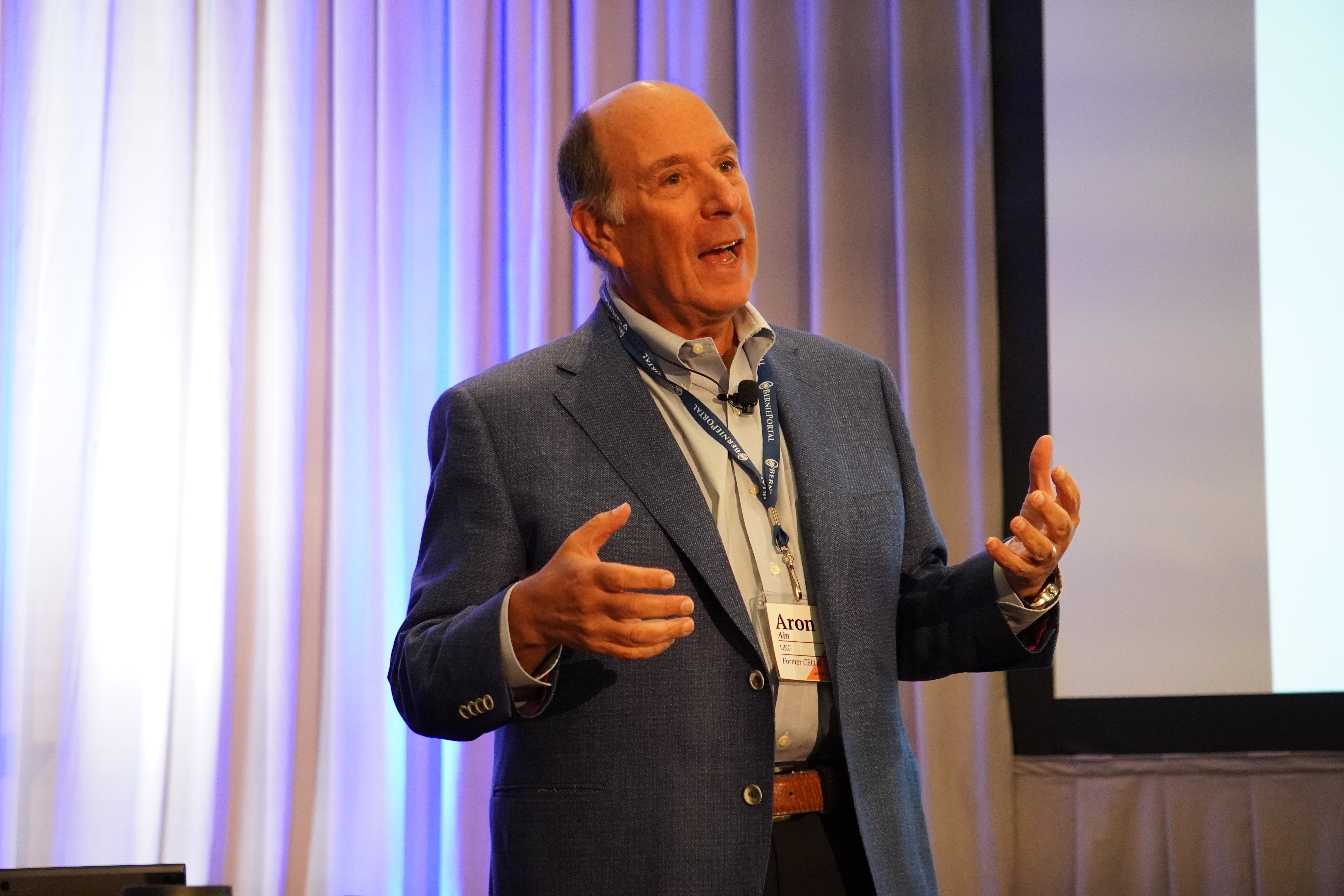
Written by
Germeen Tanas
Germeen is an aPHR-certified writer on the marketing team at BerniePortal. She writes about HR, healthcare, and benefits.
2024 Mental Health Trends in the Workplace

According to SHRM’s 2022-2023 State of the Workplace report, increased mental health services and well being initiatives are among the top five concerns for employers going into the future.
The World Health Organization (WHO) states, “Work can be a protective factor for mental health but it can also contribute to potential harm.” As the HR professional at your organization, your role is to manage not only people, but also your work environment.
The mental health of your employees should matter to you because good mental health enables people to work productively, and a safe and healthy working environment supports good mental health. Your unique position enables you to play a positive role in the mental health of your employees.
Why Should HR Leaders Care About Mental Health?
The WHO estimates that 12 billion working days are lost every year to depression and anxiety at a cost of “$1 trillion per year in lost productivity.” So, although mental health can seem completely separate from business, the two are actually closely intertwined. There is a direct correlation between mental health and the success of your organization.
Let’s look at mental health trends for 2024 so you can be better prepared to take on the new year.
Top 5 Workplace Mental Health Trends in 2024
1. Companies are investing in DEI to improve mental health and engagement.
DEI stands for diversity, equity, and inclusion.
An inclusive workplace is an office that is both physically and mentally safe for people of all backgrounds, cultures, and lifestyles.
The Harvard Business Review states that people with historically marginalized identity groups were “less likely to get a supportive response when they talked about their mental health at work; and were overall less engaged around job satisfaction, trust, pride, and intent to stay at their employer.”
Although employers cannot fix all the inequities in the world, they have a responsibility to avoid perpetuating them. So where can you begin?
Forbes suggests starting by evaluating the effectiveness of your current efforts. If you do not fully understand the problem, it becomes increasingly difficult to design a solution.
Once you understand the problem, create an anti-discrimination policy that goes beyond the basics. Lay out your organization’s values and send them out to all employees. Make it clear that your organization takes the issue of DEI very seriously. The next step is to actually enforce the policy. A policy is useless if it is not used to police certain issues.
It’s important to keep in mind that an inclusive workplace can look different for each organization, depending on the various needs of their employees. It’s important to focus on the needs of your employees on a case-by-case basis. Boston Consulting Group (BCG) encourages employers to focus on the “hidden gems” for each marginalized group.
For example, many men and women consider their hidden gem to be the tools to balance both work and home/family responsibilities. Offering these tools to employees at your organization, by offering paid paternity and maternity leave, and more flexibility, can go a long way.
For racially and ethnically diverse employees, the hidden gem is stripping bias from promotion decisions. This can require a “rewiring” of biases which is a large but worthwhile investment for your organization.
Check out BCG’s article on “Fixing the Flawed Approach to Diversity” for the full list of hidden gems and more ways to improve DEI at your organization.
2. Leaders will choose work-life harmony over work-life balance.
The word “balance” often denotes struggle. Many people think of that feeling they get when they’re about to slip on ice and have to quickly regain composure. “Work-life balance”, typically denotes a struggle to juggle two very important commitments.
This year, work-life harmony is the new trend. Work-life harmony is the idea that your work and your life do not have to be at war, that you can succeed at both simultaneously.
The U.S. Office of the Surgeon General outlines four major Work-Life Harmony Components:
- Provide more autonomy over how work is done
- Make schedules as flexible and predictable as possible
- Increase access to paid leave
- Respect boundaries between work and non-work time
At BerniePortal, for example, expectations are set and employees are given autonomy over their responsibilities. When employees are trusted with a task rather than being micromanaged, they are more likely to do well.
In The 7 Habits of Highly Effective People, Stephen Covey defines ‘trust’ in this context. He states, “Trust is the highest form of human motivation. It brings out the very best in people…The steward becomes his own boss, governed by a conscience that contains the commitment to agreed-upon desired results. But it also releases his creative energies toward doing whatever is necessary in harmony with correct principles to achieve those desired results.” Giving your employees more autonomy will ultimately help your organization achieve its desired results, and it will improve your employees’ wellness.
Take the time to reflect on what you can do to gradually improve work-life harmony at your workplace this year.
3. Leaders will watch out for signs of burnout and encourage employees to use PTO.
Overwhelming amounts of consistent work and packed schedules can cause employees to become overwhelmed, which eventually leads to burnout.
In 2019, the World Health Organization formally included burnout in the 11th Revision of the International Classification of Diseases (ICD-11) and defined it as “a syndrome conceptualized as resulting from chronic workplace stress that has not been successfully managed.” Burnout is when someone feels overworked to the point of exhaustion. When employees feel burnt out, they are more likely to be less productive or even quit their jobs.
While burnout is typically caused by what happens at work, the effects of burnout can trickle over into one’s personal life and affect every dimension of wellness.
Here are some signs of burnout you can watch out for:
- Feelings of exhaustion
- Reduced productivity and energy
- Lack of motivation
- Feelings of extreme stress
- Feeling sluggish and lethargic
Dr. Sandra Dalton-Smith, author of Sacred Rest, states, “The most productive people– people who produce at the highest mental, physical, creative, emotional level of capacity– rest.” Rest should be prioritized as a tool for productivity.
To promote rest, HR professionals should encourage employees to take advantage of their PTO or adjust policies if they’re not currently supporting the team’s needs. It’s no secret that taking days off to recharge is imperative for employee wellbeing. It’s also important to monitor and limit overtime so that employees don’t feel pressured to overwork themselves—and eventually experience burnout.
4. Organizations will begin solving issues of loneliness and isolation among employees by creating a more inclusive work environment.
According to the Harvard Business Review, “The lonely feel superficially connected to others, perhaps cordial but not truly collegial.” It’s not easy to tell if your team member is feeling lonely and isolated. Oftentimes, employees don’t feel the psychological safety they need in order to open up at the workplace.
The American Psychiatric Association urges employers to regularly ask employees whether they feel valued at the workplace. HR pros can start an open line of communication about team members’ thoughts and feelings regarding the organization’s culture.
The best way for you to address feelings of loneliness and isolation at your organization is by keeping people included. You can think of your workplace almost like a college. Colleges host clubs, sports, and other events that appeal to different personalities. The aim is to make students feel like they matter to the organization. The workplace is not very different.
For example, at BerniePortal, we have lunch catered for all employees once a month. This is an excellent way for BerniePortal to say ‘thank you,’ and it also sets aside time for employees to interact with one another for at least one hour every month. We are also starting up a BerniePortal soccer club and book club! These clubs are bringing together team members from different departments and giving them a chance to connect through shared interests outside of work.
Company events can look different for your organization. Other ideas include company-wide movie nights, trivia nights, or volunteer days. These events give employees opportunities to feel connected with one another on a more personal level, which ultimately decreases feelings of loneliness and isolation.
5. Companies will be intentional about cultivating a positive company culture.
Work is where most people spend the majority of their time. Your employee may see you and other team members even more than they see their own families. This time commitment makes the need for a positive work environment even more dire.
According to Gallup, recognition amplifies wellbeing. When employees have “thriving wellbeing and are experiencing the best recognition experiences possible, they’re more likely to be a top performer and to feel like they’re paid fairly, and are less likely to be actively looking or watching for job opportunities.” What recognition experiences do you provide to employees at your organization?
At BerniePortal, we give individual recognition to employees through High 4’s. High 4’s are recognition notes that team members can write for one another. Every Friday afternoon at our company meeting, we pull three High 4’s, read them aloud, and give gift cards to celebrate employees. We also share wins throughout the day via group messaging. Although these may seem like little things, they are easy steps you can take to show recognition to your employees.
Wellness Tips for Yourself
HR Parties of One often get so caught up being a great resource for their employees that they forget about themselves.
You’re an employee too! If you are not well, you will not be able to do your job effectively and burnout will quickly consume you. Check out our HRPO1 episode on How HR Can Avoid Burnout for some wellness tips you can use this year!
Additional Resources
You can stay informed, educated, and up to date with important HR topics using BerniePortal’s comprehensive resources:
- BernieU—free online HR courses, approved for SHRM and HRCI recertification credit
- BerniePortal Blog—a one-stop shop for HR industry news
- HR Glossary—featuring the most common HR terms, acronyms, and compliance
- Resource Library—essential guides covering a comprehensive list of HR topics
- HR Party of One—our popular YouTube series and podcast, covering emerging HR trends and enduring HR topics

Written by
Germeen Tanas
Germeen is an aPHR-certified writer on the marketing team at BerniePortal. She writes about HR, healthcare, and benefits.
Related Posts
For HR professionals at small to midsize businesses (SMBs), success often means wearing...
We just wrapped up another phenomenal Weekdays with Bernie (WWB) Conference! This year...
Employees are an organization's heart and soul, and valuing their opinions can have a...
Overhiring amongst large corporations has ceased, and now, the tables are turning on the...





.jpg)


Submit a Comment